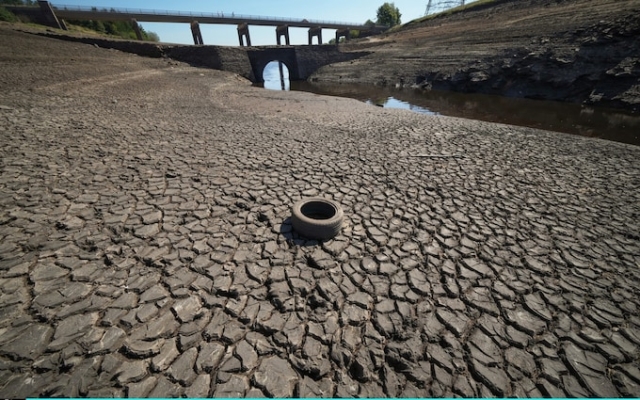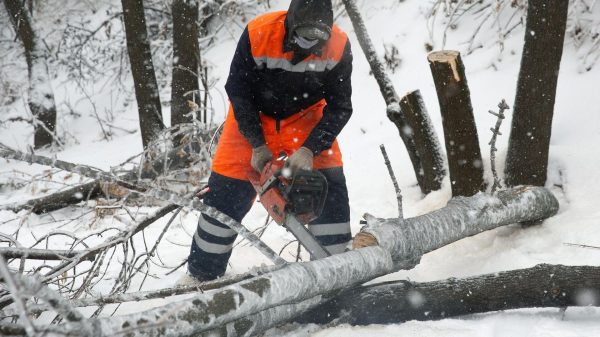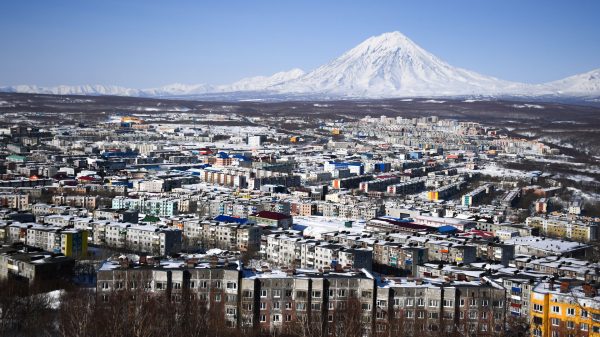 The UK risks another summer of water shortages if last year's record high temperatures repeat. Photo: Christopher Furlong. /Getty Images
The UK risks another summer of water shortages if last year's record high temperatures repeat. Photo: Christopher Furlong. /Getty Images
Traveling around Devon and Cornwall this summer, tourists will be asking for water savings during their visit through bus stops, digital billboards and flyers at petrol stations.
The warning is not new to the region's estimated 1.4 million people, some of whom have been living under permanent hose bans for more than nine months.
This is a stark reminder that much of Britain has yet to fully recover from last year's unexpected heatwave as the country succumbed to record temperatures.
Eight districts have been declared drought-stricken due to alarmingly low rainfall, prompting five water companies to announce a ban on the use of hoses for million households.
Now, with a drought from May extending into June and temperatures as high as 30 degrees Celsius expected this weekend, experts are wondering if the summer of 2023 could bring more nasty surprises.
According to the Met Office, in the coming months, the country is expected to have above average temperatures and close to average rainfall. But if weather conditions become much hotter, it is fraught with serious problems.
How rainfall has changed over the past year
“We just have to wait and see,” says Lucy Barker, a drought expert at the UK Center for Ecology and Ecology in Wallingford. Hydrology.
“Since mid-May, river flows have been receding over time, because we have hardly seen any precipitation. If this continues, then yes, I think we will probably see some consequences.”
About a third of the water that flows from British taps comes from underground sources known as aquifers. Almost everything else comes from surface sources such as reservoirs, lakes and rivers.
Since last summer, water companies have been relying on winter rainfall to replenish supplies, Barker said, with mixed to positive results.
Mid-January through February was an exceptionally dry period , but then March was exceptionally wet, she says. «So we had a relatively good reload in the south and east.»
But according to the Met Office, rainfall was average in April and then reached only 55% of the average in May, and river flows receded for a month, according to the Environmental Protection Agency.
Since two regions are officially classified as dry — Devon and Cornwall, as well as parts of East Anglia — this means that the seasonal decline in reservoir levels, groundwater levels and river flow has already begun.
< p>The government is monitoring the situation with water companies through the National Drought Control Group, but the Environmental Protection Agency has warned that shocks like last summer's heat wave «could change everything in an instant.»
Droughts – long periods of dry weather – make it difficult for water utilities. The lack of precipitation means that the rivers do not fill up. Evaporative leeches accumulate water from reservoirs. Dry shifts of soil, damage to pipes. And, understandably, people use more water to stay cool.
What's more, critics say the lack of investment in water infrastructure since privatization has made the UK particularly vulnerable, with no new reservoirs built since 1991 despite a population increase of around 10 million.
 During a heat wave last summer, water levels in reservoirs were critically low in some areas. Credit: Christopher Furlong/Getty Images
During a heat wave last summer, water levels in reservoirs were critically low in some areas. Credit: Christopher Furlong/Getty Images
These vulnerabilities were brutally exposed last year.
In the southwest, the flagship Colliford reservoir fell below 20 percent at low tide.
David Harris, director of drought at South West Water's parent Pennon Group, says «patchy» winter rain in Cornwall meant that in March the company «expected to move into the summer of 2023 with our strategic storage at an all-time low».
In response, South West extended the hose ban until Dec. 1 to help boost inventory, while the company is also pumping out additional water from former quarries it has acquired.
As a result, Colliford is now about 70% full, slightly higher than at the same time last year, but still well below the 90% seen in previous dry years.
Harris urges customers to be «smart» when using water, but adds: «If we have another very hot summer coming up, we're confident we'll get through it without having to impose any tougher restrictions on customers or businesses.»
< p> In the South East and London, Thames Water also says it doesn't need a hose ban.
The company's tanks in London and Farmour, Oxfordshire are 97% and 99% full respectively, which it says are above average for this time of year.
«We are in a better position than last year,» said Nevil Mancaster, the company's director of strategic resources and director of operations in London.
“I can’t say absolutely. But all of our projections so far indicate that we won't need temporary bans on use,” he adds.
Last year, the company tackled the drought by banning hoses and sending tank trucks to water-intensive businesses like golf courses and garden centers, supplying them with treated wastewater instead of regular drinking water.
The company also put together 200 teams to fix leaks as soon as possible, with employees fixing one leak every seven minutes during peak hours.
But Thames was caught off guard by the ill-timed decision to take a £250 million desalination plant in London for maintenance. It has typically been able to provide water to 400,000 homes in the capital.
Mooncaster says that after some initial delays, the station is expected to be back up and running by July.
He disagrees that water companies are partly to blame for last year's crisis, despite the industry's ludicrous leak data.
According to the regulatory body Ofwat, more than 20% of supplies are lost due to them, or about 2.3 billion liters per day per year until March 2021.
“Last year was extreme summer,» says Mancaster. «And now we're seeing extreme events across Europe.»
 A more extreme summer is expected in the UK. Photo: Richard Baker/In Pictures via Getty Images
A more extreme summer is expected in the UK. Photo: Richard Baker/In Pictures via Getty Images
He says climate change and population growth are creating much bigger problems for water supply, which means we can no longer afford to ignore water scarcity. .
According to Defra, water companies currently supply about 14 billion liters of water per day, the equivalent of about 5,600 Olympic swimming pools.
But by 2045, due to climate change, about one billion liters of them will be destroyed, and by 2050, demand will grow by another four billion liters per day.
In response, the industry is working with Ofwat to accelerate the introduction of £14bn of supply-side incentive schemes. Along with a £10bn investment plan to tackle sewer problems, this means household bills are almost certain to rise.
There are plans to build three new reservoirs in Oxfordshire, Lincolnshire and Cambridgeshire, while other solutions include water recycling schemes, pipeline networks that can move water from wetter to drier areas, and additional desalination plants.
The government also wants to significantly reduce consumer demand. Households currently consume an average of 144 liters of water per person per day, but ministers want to reduce this to 122 liters.
One potential role model can be found in the east of England, the country's driest region.
Anglian Water says most households already have water meters and it is expected that by 2025 half of them will have digital «smart meters» that can show their consumption in real time.
An important implication of this is that when Anglian asks people to cut costs, they noticeably do so, says Jeff Darch, the company's head of supply and demand strategy.
Another was the discovery of a huge number of hidden household leaks, often through toilet bowls that continue to leak even when the bowl is refilled. About 8% of households have these leaks.
“The biggest savings from using smart meters comes from detecting these continuous leaks,” says Whitehouse. “They are very hard to spot, but with a smart meter, we can notify customers and we find that they fix them very timely.”
Anglian's track record is by no means flawless — in April the company was fined £2.7m after admitting to dumping raw sewage into the North Sea — but the company's success in reducing demand has helped it avoid a ban on the use of hoses. or pumping water out of rivers last summer, Darch says.
Another option that some companies are considering is desalination plants, like the one South West Water wants to build on the south coast of Cornwall.
However, they have a high energy requirement and the high-salt waste they produce can be harmful to the environment if not properly disposed of.
Whatever the answer, Jim Hunt, a local businessman and self-proclaimed 'climate freak' from Cornwall who has spent years watching Collyford Reservoir, thinks the debate over Britain's future water supply needs even more attention. than the admittedly much stinkier sewage problem.
“Wastewater problems have become a political hot topic, but there aren’t many droughts,” he says.
“If desalination doesn’t happen and the weather this summer is the same as last year, there will be risers and all, and people will be thirsty.
“Now , silver surfers like me and kids swimming on the beaches of Cornwall are one thing, but the lack of fresh water to drink, I would modestly suggest, is actually a much bigger problem.”























































Свежие комментарии